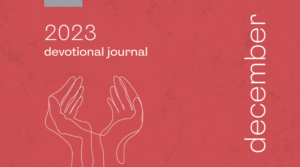Deeper ReflectionDaniel 10 to 12 is a prophetic narrative of a single visionary
experience of Daniel, which begins and ends with the same
scene: at “the bank of the great river…the Tigris” (Dan 10:3-4; v.5).
At the ending scene, two unnamed heavenly beings were conversing with
each other while Daniel was listening.A climactic question was asked: “How long will it be until the end
of these wonders?” (v.6). In Hebrew, the “wonders” (pele) is “closely
related” to the “monstrous” (pala)
17 things that the climactic Antiochus-like anti-God king speaks against God (Dan 11:36). So, “these wonders”
– “unheard-of-things,”
18 or “awesome events…are those that came to a
climax in Dan 11:29- 12:3, involving Antiochus’ laying his hand on the
realm of God”
19 and the unprecedented “time of distress” (Dan 12:1).
“When will ‘these wonders’ end?” is “a legitimate question and not at all
a matter of idle curiosity”
20 .“We live in an age in which we expect everything to be fixable. There
is a pervasive air of pragmatic optimism in our society” that in every
way and every day we can get better and better.
21 This kind of mentality
is also found among God’s people. Popular are teachings and books
on “X number of simple effective ways” to this and that for successful
Christian living. “We have reduced sanctification and spiritual victory to
a technique to be learned and mastered, almost like a golf swing.”
22 The
discipleship question “How long?” is a question for God to answer. “How
long?” underscores the reality that things cannot be easily or quickly
fixed as and when and how we want it to be.
17 Tremper Longman, 286
18 Tremper Longman, 286
19 John E. Goldingay, Daniel, Word Biblical Commentary (Word Books, 1989), 309
20 Dale Ralph Davis, The Message of Daniel, The Bible Speaks Today (IVP, 2013), 165
21 Iain M. Duguid, Daniel, Reformed Expository Commentary (P&R, 2008), 209
22 Iain M. Duguid, 210

